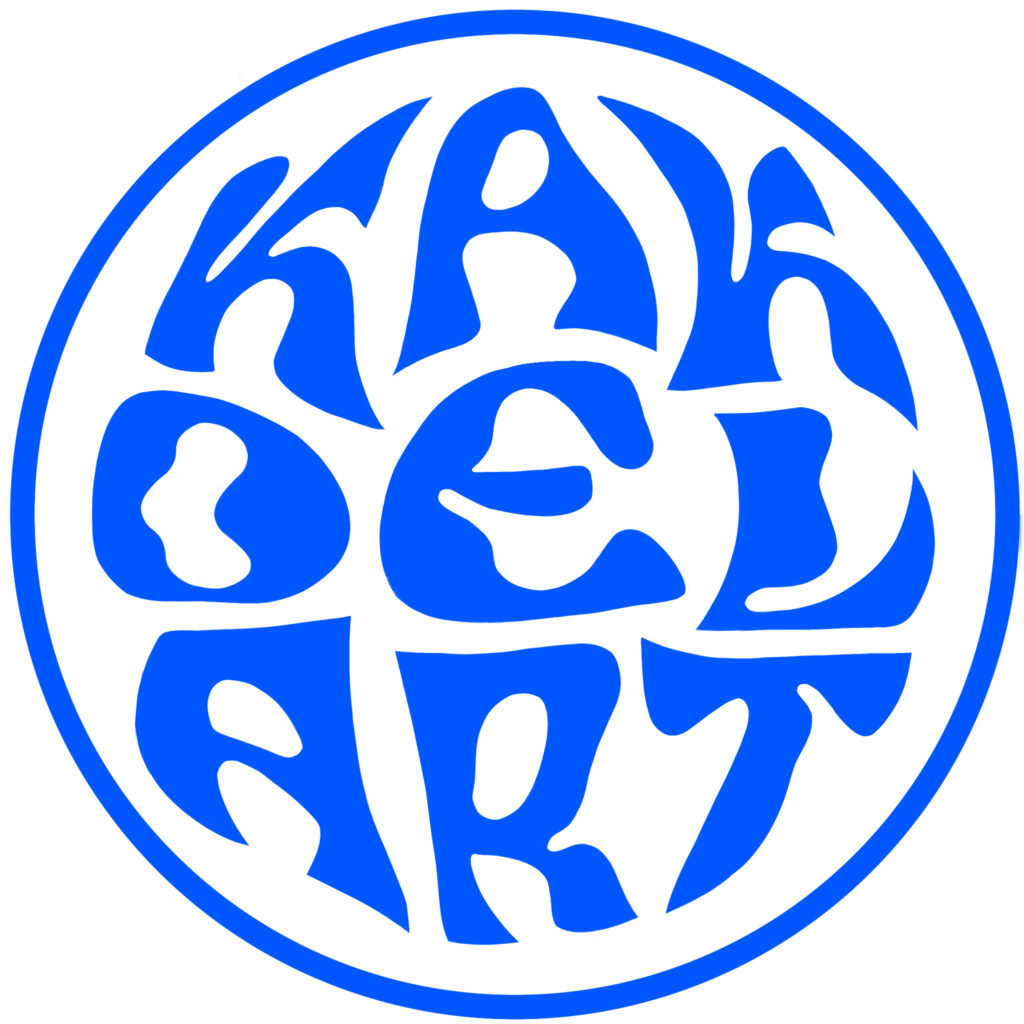KakdelArt – a Platform for Artists’ Integration. Conversation with Founder Dasha Ilyashenko
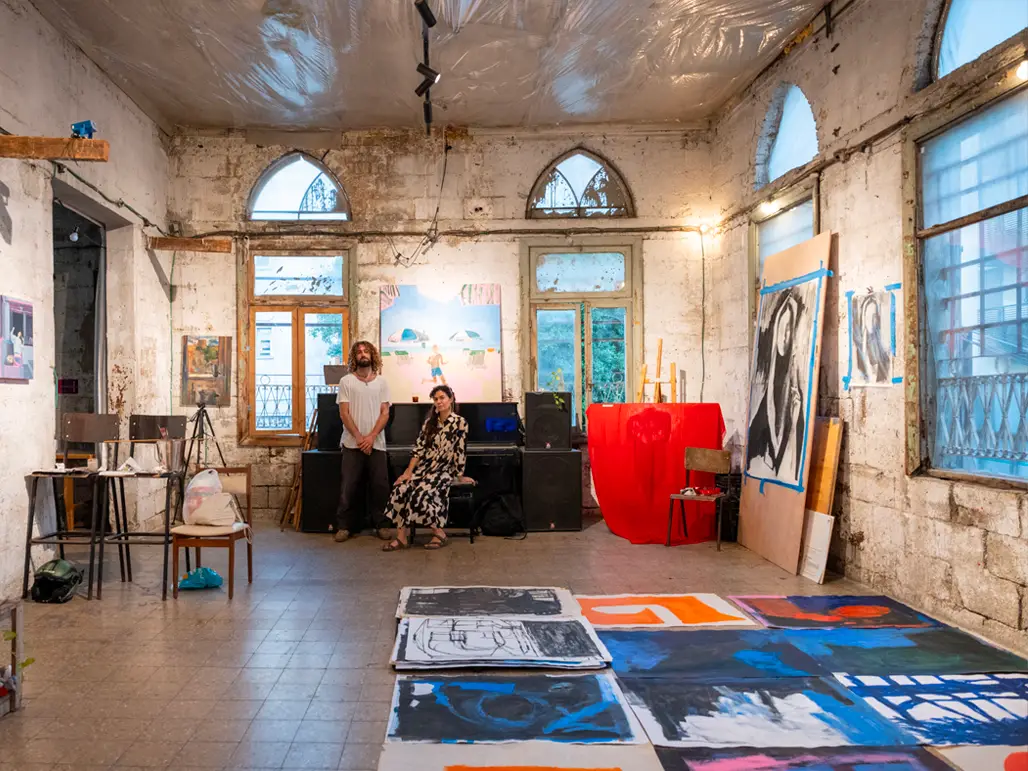
Dasha Ilyashenko is a contemporary art curator, cultural event producer, and community manager and a founder of KakdelArt, a platform that helps artists integrate into the local art scene in Israel. In this conversation, Dasha shares the story of how the platform was created, her goals, and her vision of the future.
Dasha, you moved to Israel not so long ago yourself. Did you found KakdelArt right after you arrived?
Not immediately. I moved in 2019, and KakdelArt was founded in 2022. Before that, I worked as a community manager. Even earlier, I tried to start my own creative cluster. My initial idea was to connect artists with spaces. While learning how the art field works in Israel, I realized I was very interested in curating — so I began organizing curatorial projects.
What gave you the push to create a platform? How did you realize it should be a bigger platform rather than just a gallery?
When the war in Ukraine started, everyone here felt a strong urge to help. We organized a charity exhibition with around 70–80 artists, mostly Russian-speaking. We raised money and donated it to charities in Ukraine. The participants of that exhibition became our first community — these were people already living in Israel.
At the same time, we understood that a huge wave of Aliyah was about to begin, and many new immigrants would be artists — usually liberal-minded people. By that point, I had already been in Israel for three years, working with Israelis and building connections in Tel Aviv and Jerusalem. I thought it would be meaningful to help these people understand where they are, connect with each other, and meet the Israeli art scene. That’s how KakdelArt was born.
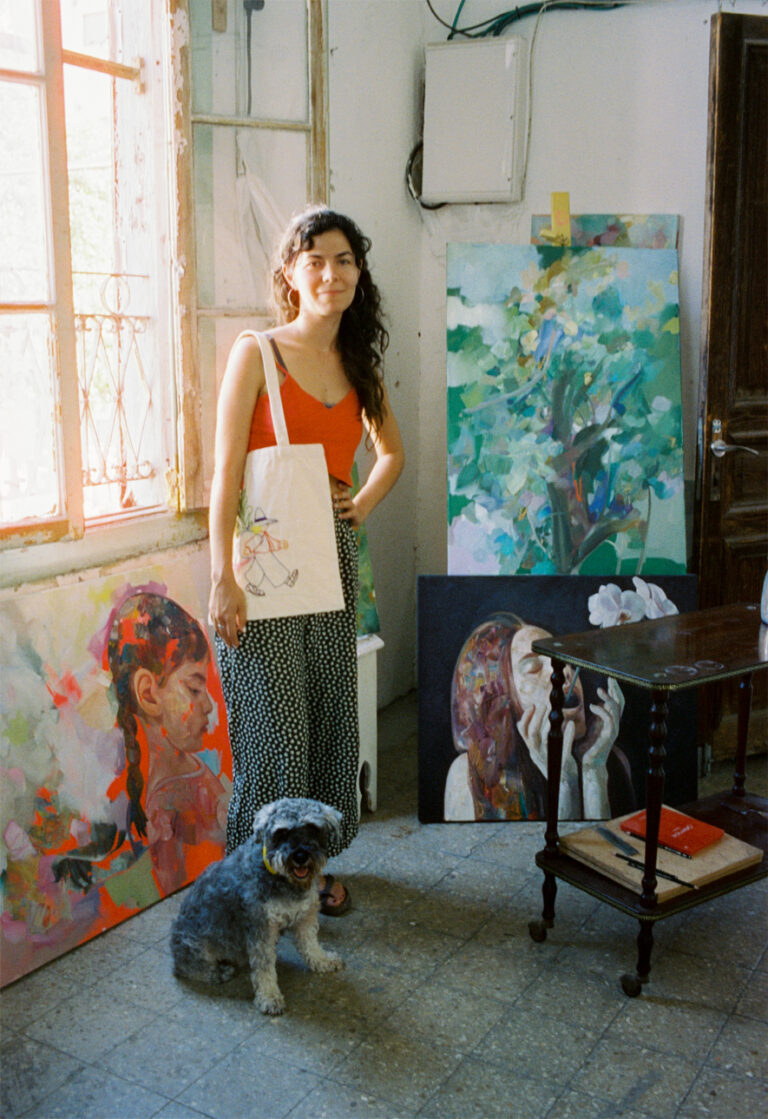
Tell us more about the structure. How is KakdelArt different from a gallery?
It’s not a gallery at all. Finding the right name was hard. During the first year, we simply called it “a community of Russian-speaking artists,” which it was. Over time, I realized it was more of a platform — an organization that helps artists find opportunities, initiatives, and career paths. That word — “platform” — fits best.
Are you running the platform alone, or do you have a team?
I’m the driving force. I work with a few people regularly, but the team differs form project to project. For example, I always collaborate with graphic designer Vera Konyashova. For larger events, I work with several curators and producers. For each initiative, I build a team around it.
How many initiatives do you usually run per year?
A lot. I counted that in three years we’ve done about 200 different projects — networking events, lectures, festivals, exhibitions, residencies, and programs.
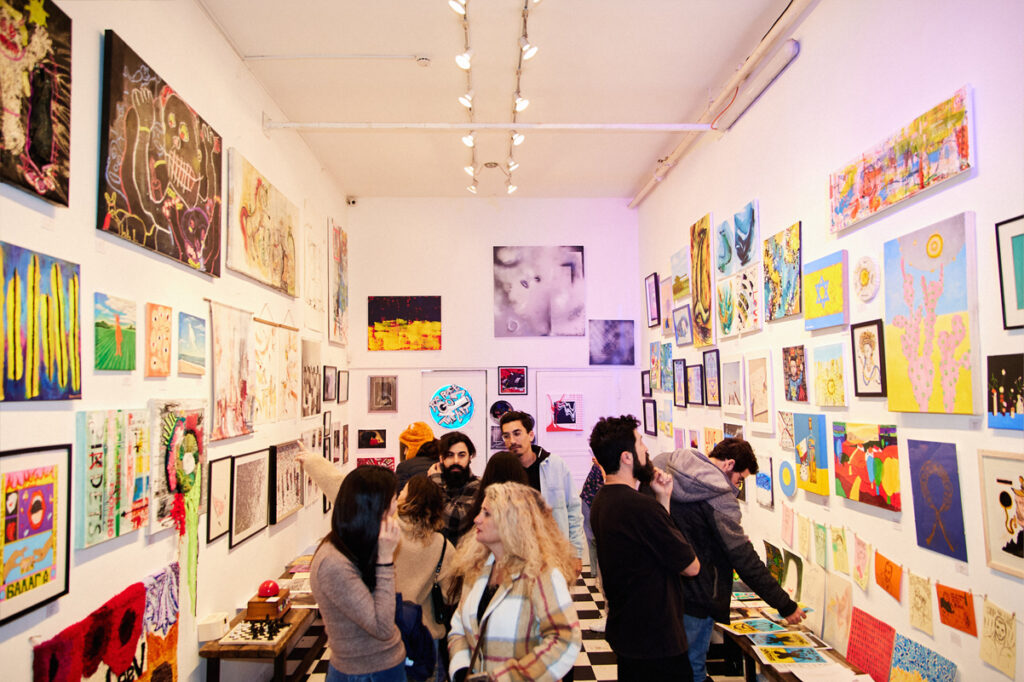
Are these initiatives only for newly arrived artists?
No, there’s no division based on when someone immigrated — that doesn’t matter. Anyone who finds it relevant can join. And not only Russian-speaking artists. We’ve had participants from South Africa, the UK, Spain, and of course Israelis. The idea was never to limit ourselves to Russian speakers. The main goal has always been to build a bridge between our community and the Israeli art scene.
You work with many different formats. Which ones feel most relevant and effective right now? How do you measure effectiveness?
For me, success is measured by people’s reactions: do they come, do they give positive feedback, and does something grow out of the event afterwards? Different formats have worked at different stages of our development. We began with monthly networking meetings. At first, they were in Russian, then in English. We invited Israeli artists and curators. At the same time, we ran our own initiatives — residencies, exhibitions, festivals, organized entirely on our own. We invited Israeli professionals and opened it to a wide audience. Now that I know more artists personally, we can create more advanced projects — residencies, exhibitions, festivals — but in partnership with institutions. That is a big success: they provide the space and the budget.
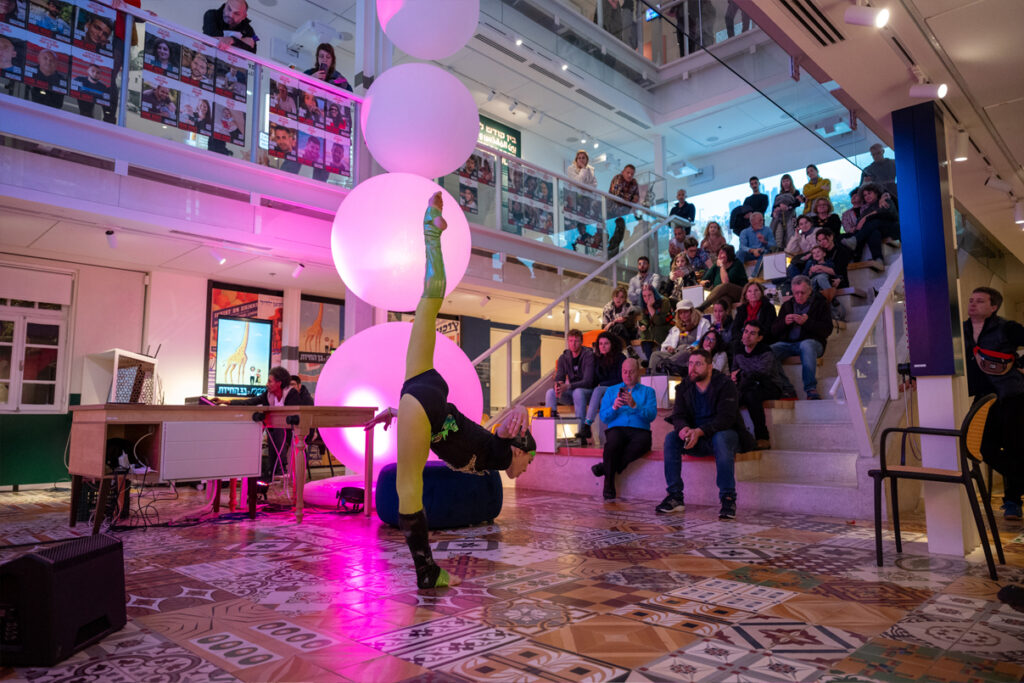
So now you have external funding, not just your own limited resources?
Exactly. We now focus more on collaborations with institutions and fewer projects done entirely on our own. KakdelArt is a brand, and Israeli professionals know about us. Of course, everything depends on opportunities. Sometimes we still organize projects with no budget, if the space is amazing and the idea feels important. For example, we recently held an art residency in collaboration with Hertzel House and its curator, Yahel Nevo, where artists from seven countries participated. That allowed Russian-speaking and Israeli artists to truly connect. But overall, collaborations are our direction. Our mission is not just to give artists a chance to exhibit and network, but also to support their careers — to help them get involved in Israeli projects and get paid for their work.
Can you give an example of a format that works especially well?
One we really love is inviting a curator to talk about an open call, and we translate it into Russian. We did this with the Jerusalem Biennale of Jewish Art (the curator Ram Ozeri). The curator explained what they were looking for, and about ten of our artists applied — at least three were accepted. That’s a big deal, because it’s very competitive.
We did the same with the Jerusalem Design Week (the curator Sonja Olitski) : invited a curator, held a meeting, and in the end three of our participants took part. This helps artists access opportunities, understand them better, and make direct connections.
Are there formats that feel especially valuable to you right now?
Yes, I really love long-term programs: residencies or laboratories. Unlike a group exhibition, here you have a process: artists go through a program together with a curator and with each other. It can last from two to four months, or ten meetings. This creates strong connections, allows for deeper exploration of a topic, and results in higher-quality work. For example, in residencies artists have their own studio spaces, plus common meetings, Friday coffee gatherings, open events for friends, and talks with curators. At the end, there is usually an exhibition. Another format is our collaboration with Neve Schechter (Center for Contemporary Judaism and Art). There, participants meet weekly, read and discuss Jewish texts, get inspired, and then create artworks. Usually there are about 10–20 participants. They are selected through an open call and interviews. I love this format because it allows us to choose strong artists, the process lasts for months, and it works very well for building community.
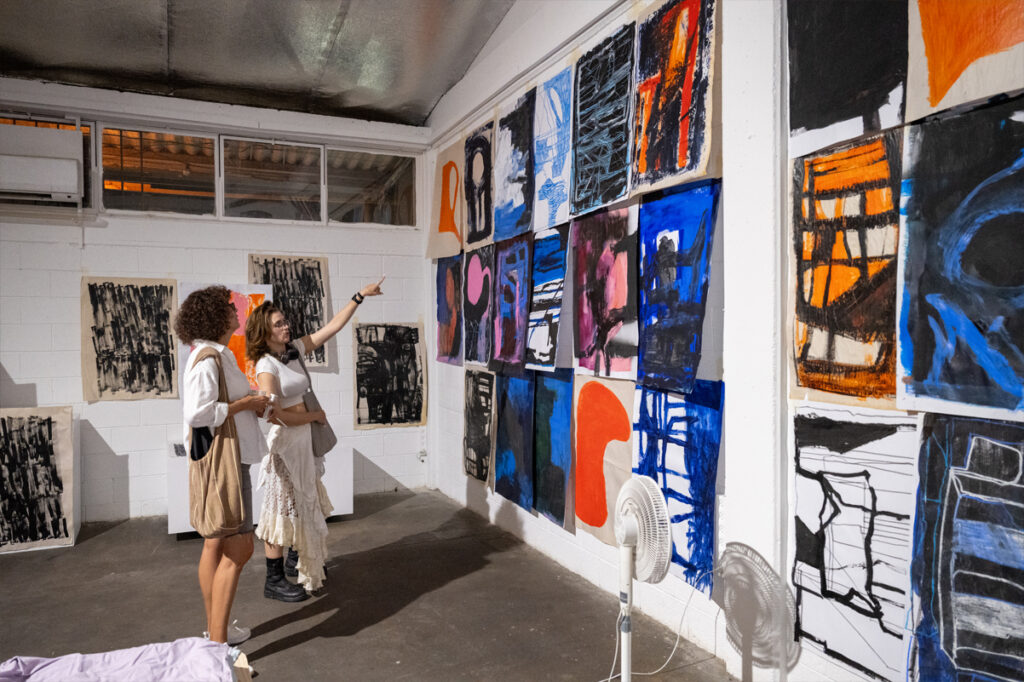
You said KakdelArt is not only about Russian speakers, but about building a bridge to Israeli culture. How do you integrate artists?
- First of all, we never organized events only at Russian-speaking venues. There are many of them, they’re great, but they don’t help integration. You need to look for non-Russian-speaking partners and spaces, otherwise you stay in a closed circle. We always tried to work in places that already had their own diverse audience.
- Second, partnerships with other communities, guides, Israeli institutions. At first, we worked with alternative spaces — like Kuli Alma (a gallery) or Sirkin 21 in Haifa. It’s easier to get in there than into a museum. Later, when we already had projects and a portfolio, institutions started being open to collaborate.
- Third, visibility. We worked actively on social media, and we made sure that media outlets covered us in non-Russian languages. From the start, we communicated in English. Now our rule is: if the event is only for Russian speakers (for example, a Zoom meeting), we announce it in Russian. If it’s for a wider audience — in English.
Can you share examples of successful integration of specific artists?
Yes, my favorite example is Polina Liakhovitski. She’s 22 now, but she moved to Israel at the age of 19 and had almost no experience in the art field. She came to us and said: “I want to organize a festival.” We started working together. She turned out to have amazing energy — quickly finding people, coming up with ideas. To date, she speaks Hebrew, performs, shows her work in galleries, takes part in institutional projects, and has been accepted into Bezalel Academy. Articles were even published about her.
Another example is Yet Architecture — a duo of architects and industrial designers. They joined Jerusalem Design Week after our meeting with the curator. Today, both of them teach at Bezalel’s architecture faculty. This raised their professional status and opened new networking opportunities.
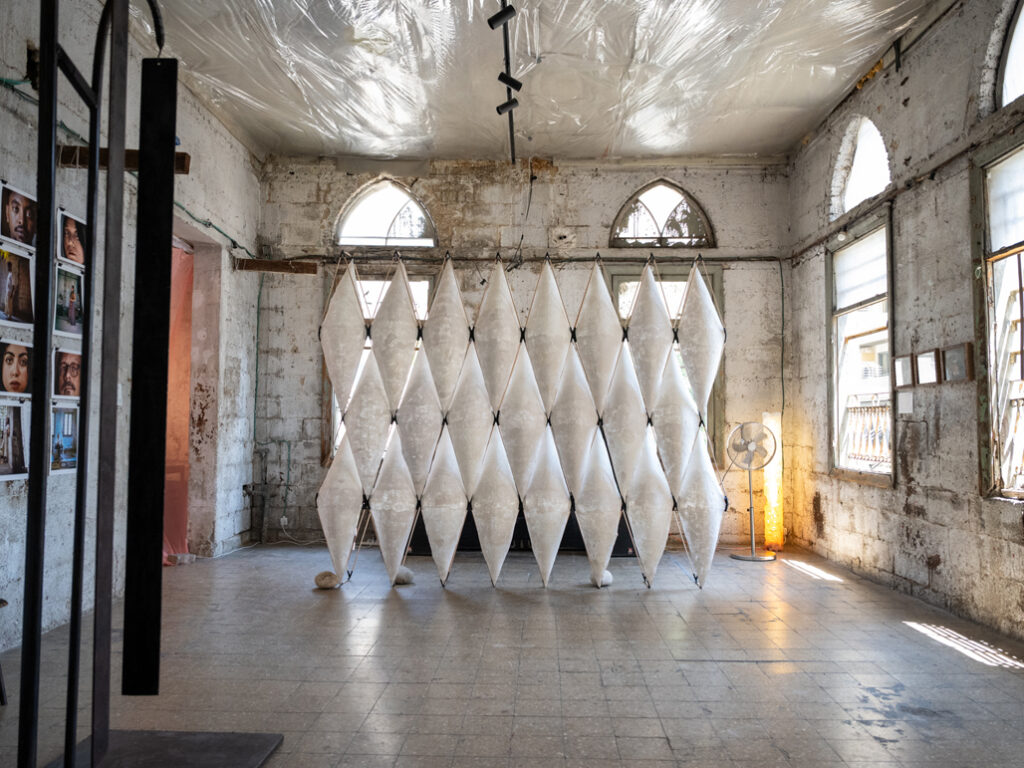
So artists who come to you are not only visual artists, but also architects and designers?
Exactly. KakdelArt is about cultural practitioners in a broad sense: new media artists, musicians, performers, architects, designers. It depends on the project. If it’s an exhibition — more visual artists. If it’s a festival — then also musicians, DJs, performers.
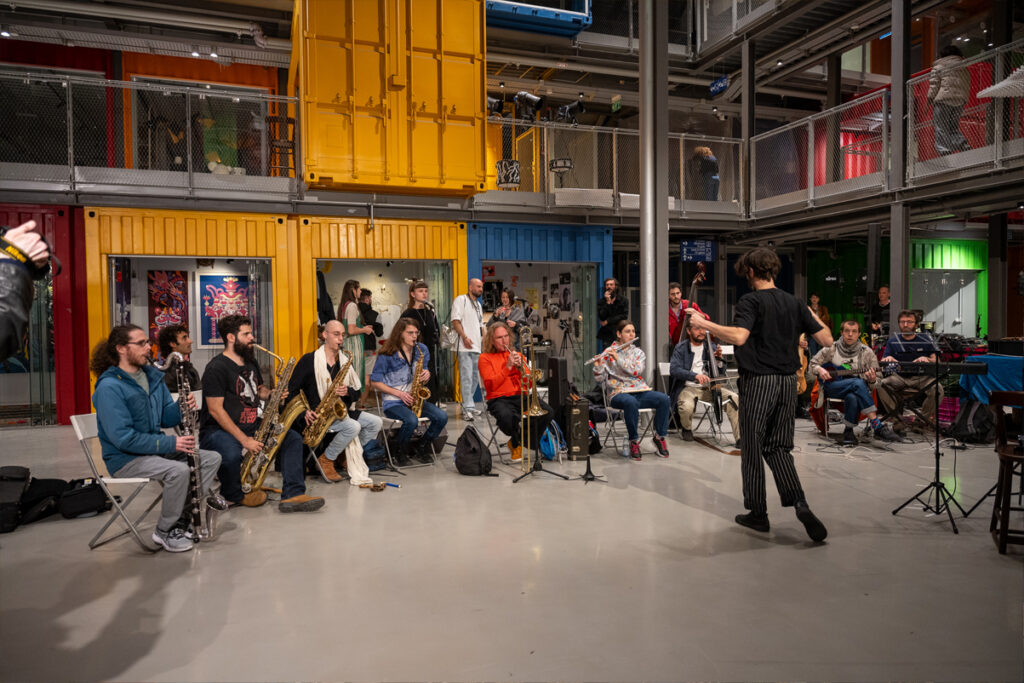
Do you have a permanent pool of participants, or are they always new?
Each time, we make sure to give new artists the opportunity to participate. For every project, we carefully select participants. Sometimes there are specific criteria—for example, artists who arrived after the war, Ukrainians, or those working with new media—but we always try to run open calls so that fresh voices and new talent have a chance to take part.
How do you select participants for projects?
I study portfolios. It’s important to see whether someone creates complete projects. If they try everything randomly without structure — that shows inexperience. But if they have big, serious projects — that builds trust.
I also pay attention to whether the artist has already taken part in residencies or programs, whether they can work on time and in a team. Sometimes the criteria depend on the program itself: for example, in the project with Neve Schechter we were looking for artists interested in Jewish texts.
And of course, personal experience matters: if someone has been responsible and delivered work on time — I’m more likely to invite them again.
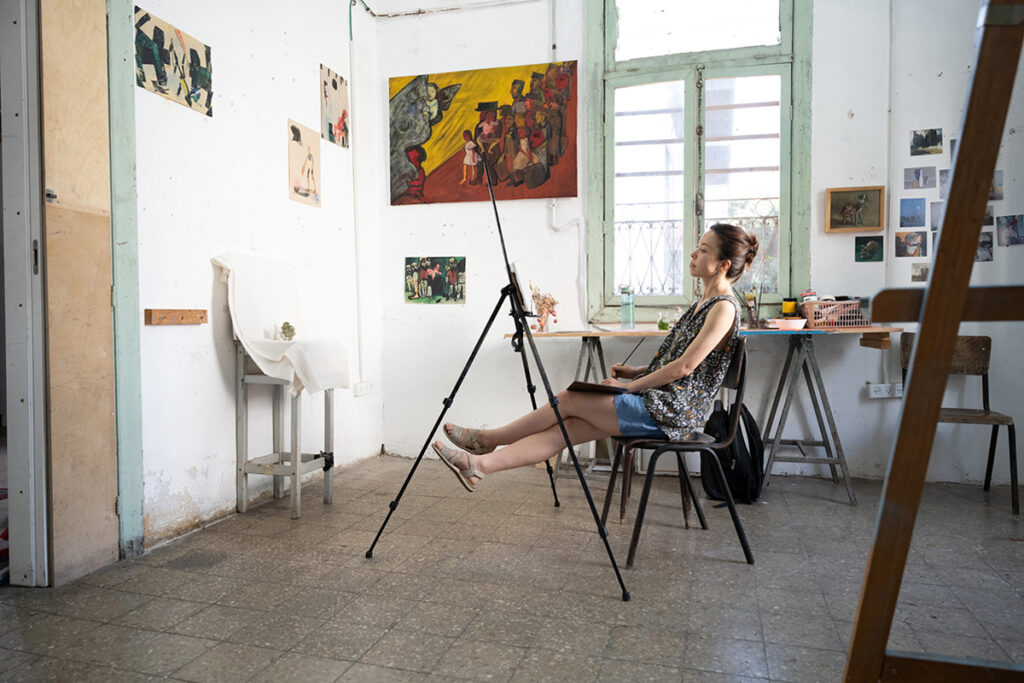
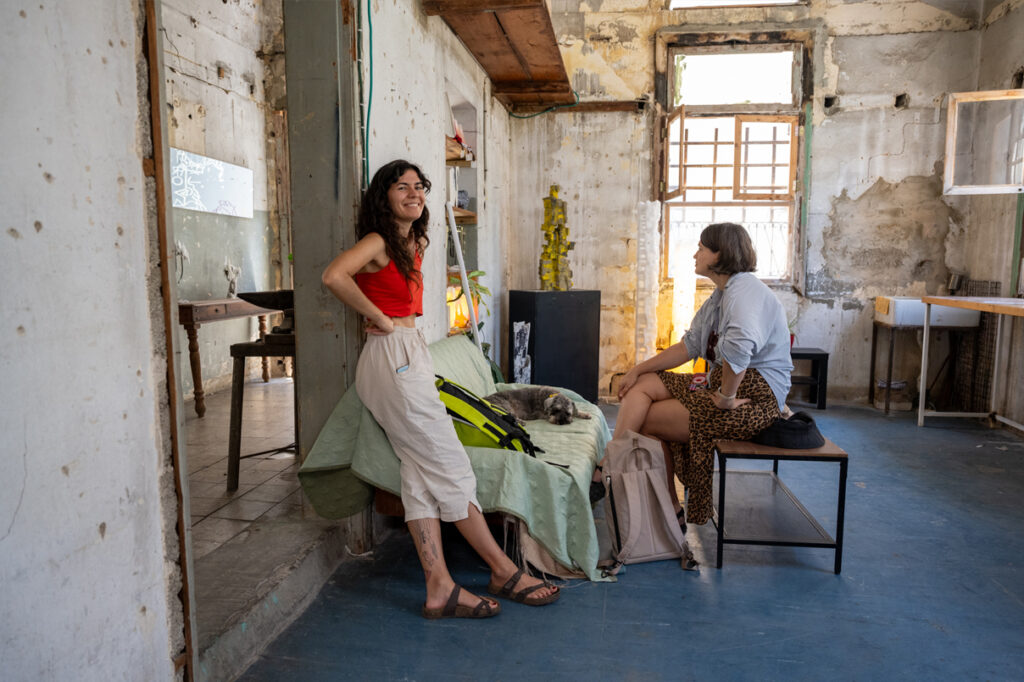
Do you have a budget? Where does it come from?
In the first year, if I remember correctly, KakdelArt was my main activity. I had some small freelance work on the side, but mostly we survived through events — ticket sales, small profits. It was hard to make a full living; I earned very little. We didn’t have a general budget. I invested my own money and then tried to cover the costs through tickets or something else.
In the last year and a half, I’ve been trying to create projects with external budgets — it depends on the partner. We collaborate with institutions. For example, we organized a big New Year’s festival at the Tel Aviv Museum of the City, on Bialik Square. The budget came from the museum and from the Tel Aviv Municipality’s Immigration Department (Rashut Le-Klita). The same department funded a meeting with curators and artists. Neve Schechter had a program with its own budget. We also worked with the Ramat Gan Museum — again with their funding. This is great because it gives us the chance to pay artists, and also pay me for organizing. It’s a huge amount of work to connect everything and manage it all.
How do you see monetization? Many people say communities should be monetized through their members.
I thought about this a lot. Many people advised me: “monetize the community through artists.” But I don’t want that. I want artists to receive money, not pay it. So now I’ve come to the conclusion: monetization must happen through partnerships. And this is already working — which is very important for me.
But isn’t it exhausting to rely on volunteering all the time?
Yes. For the first year and a half it was all volunteer-based. I did it for my own growth, because it allowed me to realize curatorial projects. It expanded my network and connections. I believed it was worth continuing.
In the end, this unpaid work became part of my portfolio, and thanks to it I started receiving invitations to paid projects — as a curator, project manager, or organizer. For example, the Ministry of Culture gave a grant to the ANU Museum to create an accelerator program for immigrant artists. They invited me to build the program, invite artists, and curate it. This happened only because of my work with KakdelArt.
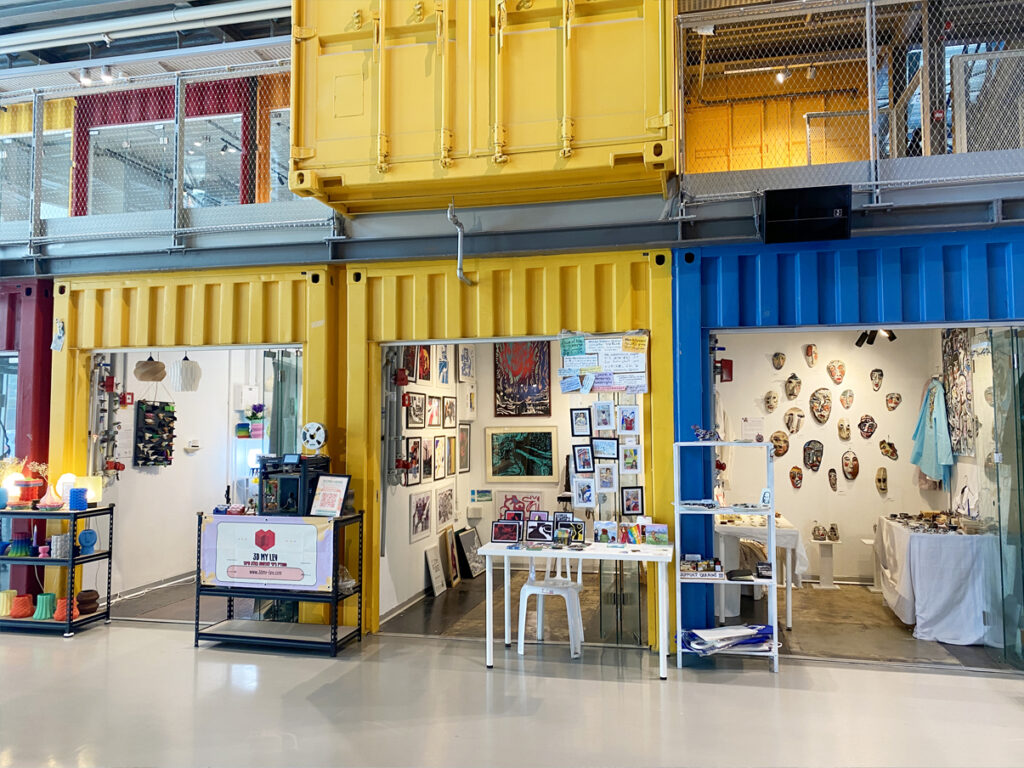
What concrete next steps do you see for yourself?
First, to learn how to raise money for projects. Second, to start doing international projects. The Israeli art scene is small, and both artists and I personally are interested in going beyond its borders. We already did a couple of small international projects, but I’d like more and bigger ones.
Can you give an example of an international project?
When the war in Israel started after October 7, many Russian-speaking artists had to leave for safety abroad. One curator – Olga Myannik -I knew from a KakdelArt networking event moved to abroad too and opened a gallery – Sisters Room. Together we organized a short residency for Israeli artists who also had relocated. In the end, we held an exhibition about the war. It drew a large audience, journalists came, and articles were written. It was an important experience. Of course, right now it’s complicated to run projects with Israeli artists because of the political context. But in my view, art should speak about such things.
In your view, should art engage with politics – especially now, with rising tensions around Israel and Jewish people? Should art help people see the truth? How do you see your own role in this process?
Art is tied to politics inseparably: even the choice to avoid politics is, in itself, a political gesture. Today, when attitudes toward Israel and Jews are becoming increasingly tense, I believe it is essential to continue making art: to remind ourselves of who we are and what we stand for, and to offer our perspective to those who are willing to be open to it. My role in this process is to support artists and create platforms where their voices can be expressed and heard.
What are your goals and mission for KakdelArt in the future?
I worked with a mentor for over six months to shape a clear mission. But of course, the direction changes with time, and I try to stay open to new opportunities. Right now, for example, I’m organizing for the first time a full accelerator program for artists “DOR by ANU” in museum ANU . It’s very exciting, and we’ll see how it goes. Maybe I’ll want to develop this format further. But the main mission remains the same: to help cultural practitioners continue their careers in Israel.
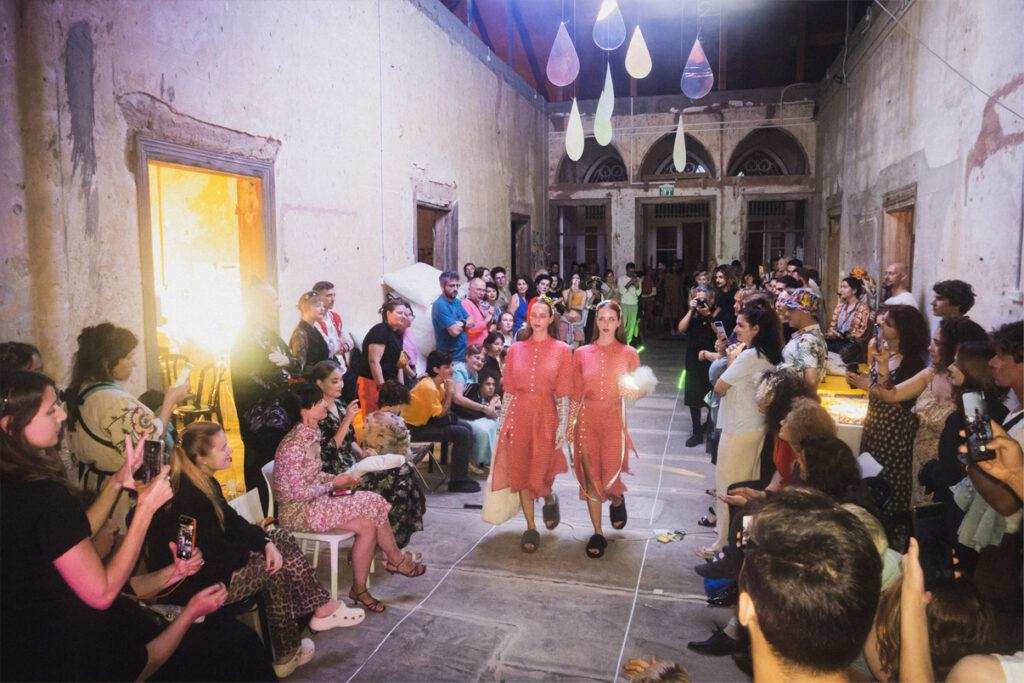
In the photo on the cover – Herzl House residency, curators Yahel Nevo and Dasha Ilyashenko, photo by Mikhail Korotkov
Interview by Nadia Kraginskii and Olga Goldina for DI CATALOGUE
Contacts:
